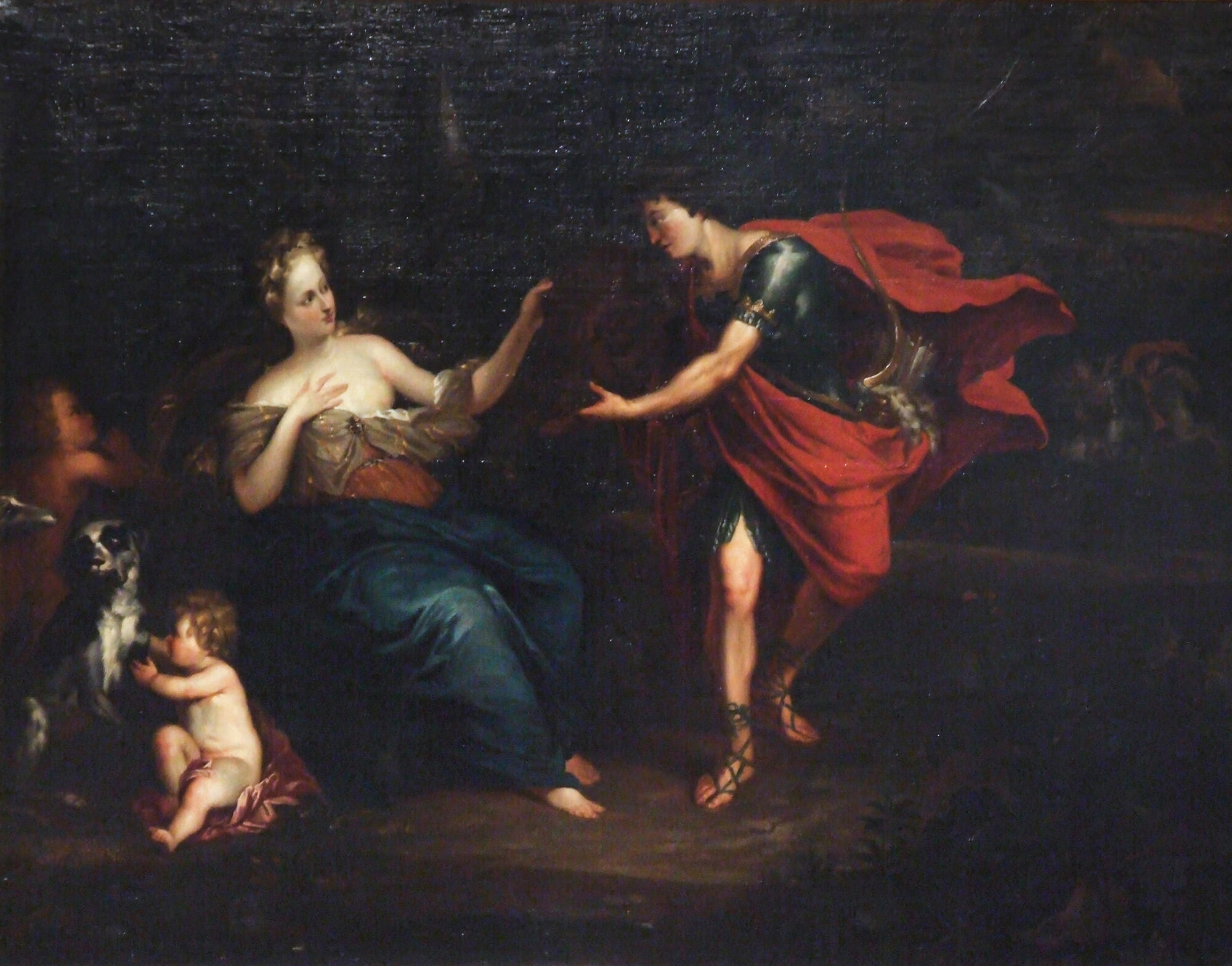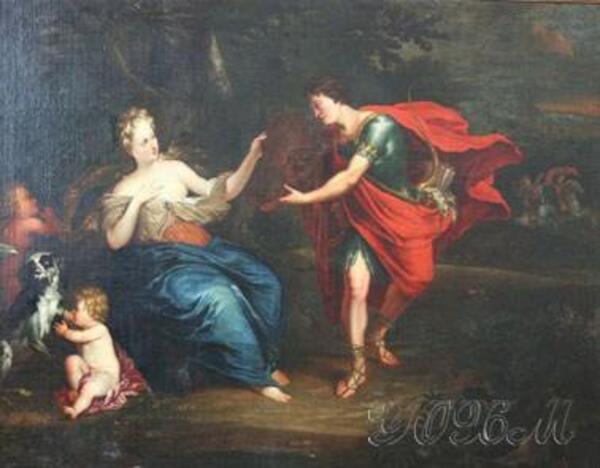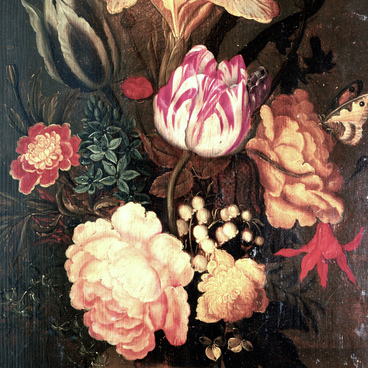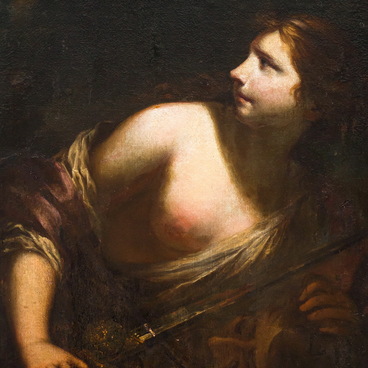The picture “Meleager and Atalanta” was painted by an unknown artist of the French school of painting at the turn of 18th century.
According to the traditions of classical painting, the plot of the painting is taken from ancient mythology — the ancient Greek myth about the Calydonian hunt. Once King Oeneus of Calydon did not sacrifice to Artemis during the annual rituals. The angry goddess sent a wild boar to the Calydonian fields that destructed crops, uprooted trees, killed livestock and people. Prince Meleager collected a band of the most famous warriors — Castor and Pollux from Sparta, Theseus from Athens, Nestor from Pylos, Jason from Iolcos, Admet from Thebes, as well as the fearless huntress Atalanta, a skillful archer. Her father, who wanted only sons, had left the newborn girl in the mountains, where she was found and suckled by a she-bear. Atalanta hit the boar with an arrow in the back, and Meleager finished off the beast. Meleager gave the boar’s hide to Atalanta, who had drawn first blood, and this offended the other hunters.
The painting of the French artist meets all the canons of the 17th–18th-century art — theatricality, a balanced composition, harmonious colors and aesthetic poses. Meleager generously offers the trophy to the beautiful warrior Atalanta, who is flattered and surprised. The artist seeks to depict a perfect world that is ruled by a man with a sound mind in a sound body. The characters look solemn and restrained, but at the same time they are incredibly elegant, graceful and eternally young. The artist emphasized the symmetry of the composition by using implicit geometry: the main scene is arranged in a triangle. The drawing is clear, and the shapes are flawless. The formal composition confirms the logic of the universe. The color scheme is based on the contrast of rich red and green, blue and orange. The bright color that is used to portray Meleager and Atalanta contrasts with the dark background, definitively proving them to be the protagonists of this story.
According to the traditions of classical painting, the plot of the painting is taken from ancient mythology — the ancient Greek myth about the Calydonian hunt. Once King Oeneus of Calydon did not sacrifice to Artemis during the annual rituals. The angry goddess sent a wild boar to the Calydonian fields that destructed crops, uprooted trees, killed livestock and people. Prince Meleager collected a band of the most famous warriors — Castor and Pollux from Sparta, Theseus from Athens, Nestor from Pylos, Jason from Iolcos, Admet from Thebes, as well as the fearless huntress Atalanta, a skillful archer. Her father, who wanted only sons, had left the newborn girl in the mountains, where she was found and suckled by a she-bear. Atalanta hit the boar with an arrow in the back, and Meleager finished off the beast. Meleager gave the boar’s hide to Atalanta, who had drawn first blood, and this offended the other hunters.
The painting of the French artist meets all the canons of the 17th–18th-century art — theatricality, a balanced composition, harmonious colors and aesthetic poses. Meleager generously offers the trophy to the beautiful warrior Atalanta, who is flattered and surprised. The artist seeks to depict a perfect world that is ruled by a man with a sound mind in a sound body. The characters look solemn and restrained, but at the same time they are incredibly elegant, graceful and eternally young. The artist emphasized the symmetry of the composition by using implicit geometry: the main scene is arranged in a triangle. The drawing is clear, and the shapes are flawless. The formal composition confirms the logic of the universe. The color scheme is based on the contrast of rich red and green, blue and orange. The bright color that is used to portray Meleager and Atalanta contrasts with the dark background, definitively proving them to be the protagonists of this story.



